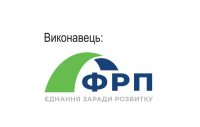Prominent personalities of our community
Davyd Guramishvili
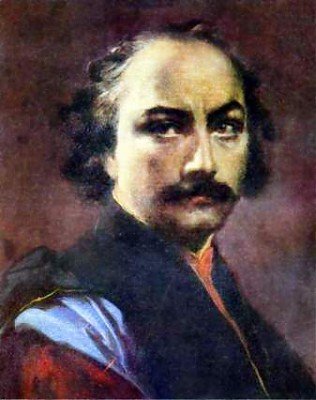
In the mosaic of famous names, the name of Davyd Guramishvili fit harmoniously.According to the census of 1782, the retired lieutenant of the Georgian hussar regiment Prince Davyd Egorov, the son of the Gurams, at that time lived permanently in the Myrhorod district.This is taken from archival chronicles.The lieutenant was wounded in the battles, but lived to a very old age.He was buried in Myrhorod near the Ascension Church, “a very worthy man and a very worthy warrior.”This fact suggests that this glorious man had merits for the Orthodox Church as well.Because in the church fence, people of spiritual rank or especially prominent people found their rest. charity in a spiritual matter.Davyd Guramishvili was a great Georgian poet, soldier, Ukrainian farmer and philanthropist.
Davyd Guramishvili was a warrior – historical documents in which he is noted testify that he spent almost half a century in the saddle.For his personal bravery, he was granted lands near Myrhorod.And he spent the short periods of the truce in his estate, which he arranged as a competent owner.
In Myrhorod, there is a museum of Davyd Guramishvili – the only cultural institution dedicated to the poet located outside of Georgia. Every year on the day of the poet’s memory, representatives of the Embassy of Georgia in Ukraine and the Georgian diaspora come to Myrhorod.
The museum’s exposition and funds contain materials about the life and work of the Georgian poet, about modern Georgia, Ukraine, in particular, Myrhorod region. There are editions of the poet’s works and books about him, items of folk life of Georgia and Ukraine of the 18th century, samples of weapons, works of fine and decorative and applied art, products of local craftsmen, gifts, and more.
There are monuments to the poet at the grave of Davyd Guramishvili and at the entrance to his literary memorial museum.
Ivan Zubkovskyi
Ivan Andriyovych Zubkovskyi and Myrhorod are inseparable concepts. In May 1849, at the age of six months, he moved with his parents to Myrhorod. He spent his childhood years here, studying at the Myrhorod District School.
The young man came to Myrhorod on vacation, studying at the Lubensk Theological School, the Poltava Theological Seminary and the St. Volodymyr Imperial Kyiv University.
While studying at the Myrhorod District School, Ivan Zubkovskyi, together with his friend Ovksentiy Bogaevskyi, helped A.P. Svidnytskyi in the work of the Sunday school he opened.
He also participated in the activities of the Myrhorod Public Library, also opened by the same A. P. Svidnytskyi.
So, under Anatoly Patrikiyovych’s tool, Ivan Zubkovskyi received his first public harte in Myrhorod, under the influence of which his worldview was formed in the future.
After graduating from the Poltava Theological Seminary, I. A. Zubkovskyi worked as a teacher in Myrhorod.
For three years (1880-1883), I. A. Zubkovskyi worked in the field of medicine in Myrhorod County, doing a lot during this time for its improvement.
On February 22, 1914, the Myrhorod mineral spring was opened under the leadership of I. A. Zubkovsky, in 1915-1916. water, supplied by Ivan Andreyovych, was tested and approved for medicinal use. At the same time, he headed the resort commission for the preparation of the opening of the health resort.
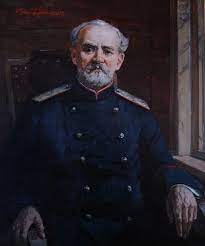
But in the summer of 1916, I. A. Zubkovky fell seriously ill, which confined him to bed for several months. Having recovered a little from his illness, he submitted a request to the governor to resign from the position of mayor due to his health. The Poltava governor satisfied him, expressing great regret on this occasion. The Myrhorod city administration did the same.
Speaking about the activity of I. A. Zubkovskyi as the mayor, we can say with certainty that the words of General of the Cavalry V. V. Sakharov, who in January 1911 congratulated the citizens of Myrhorod on the arrival of “a useful and tireless worker of the highest degree” came true. From the time of his resignation and practically without rest, Ivan Andriyovych devoted himself to preparing for the opening of the resort, which happened on April 15, 1917. Until his last days, Zubkovsky did not sever ties with his brainchild, having been a resident doctor, a sanitary doctor, and an honorary consultant after its foundation.
With his two deeds – the discovery of a mineral spring and the creation of a resort on its base, I. A. Zubkovskyi, in fact, accomplished a feat by erecting a man-made monument to himself, although he did not think about it.
I. A. Zubkovsky actively participated in other Myrhorod affairs. Thus, in 1918, he organized the bottling of carbonated Myrhorod mineral water at the resort (the bottle and label for it were made by O. G. Slastyon at the request of Ivan Andriyovych). In 1919, he was a lecturer at the People’s University, whose work was interrupted by the civil war. Together with O. H. Slastyon, he organized and opened in 1920 a scientific and art-industrial museum (now a local history museum).
I. A. Zubkovskyi is duly honored for his services to Myrhorod: 200 publications about him, 9 portraits, a monument, three memorial plaques, a street and an alley named after him, the title “Honorary Citizen of the City of Myrhorod” and much more.
Opanas Slastion
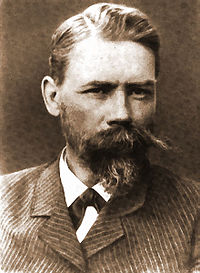
Opanas Georgiyovych Slastion is a Ukrainian painter and graphic artist of the romantic-populist direction, ethnographer, architect and teacher, founder of the Myrhorod Local History Museum. Father of Yuri Slastion.
From 1900 to 1928, he taught at the Mykola Gogol Art and Industrial School in Myrhorod. Befriended and corresponded with Dmytro Yavornytskyi. In 1928, due to health reasons, he left teaching and retired. For many years he traveled around Ukraine, drew and collected samples of folk art, folklore material and recorded the singing and playing of kobzars on a phonograph (Filaret Kolessa used these recordings in “Materials for Ukrainian Ethnology”, vols. 13, 14, 1913); he himself performed thoughts artistically. He processed the collected materials as albums: Ukrainian and Zaporozhye antiquities, ornaments, embroideries, carvings, ceramics, architectural motifs.
Since the 1870s, he actively researched kobzarstvo. Slastion actively collaborated with Kliment Kvitka and Lesya Ukrainka in the study of kobzarstva. He drew portraits of Kobzars, wrote down Dumas. In 1902, he published an article about the kobzar Mykhailo Kravchenko in the magazine “Kyivska Starovyna” (one of the most famous historical and local history publications of that time). Many years after O. Slastion’s death, in 1961, a book was published with portraits of kobzars drawn by the artist. A special merit of Opanas Slastion is that he recorded many Kobzar thoughts on a phonograph (he made the first recordings in 1903). Contributed to the organization in Myrhorod in the 20s of the 20th century of the Peasant Bandurist Chapel, later reorganized into the First Taras Shevchenko Peasant Bandurist Chapel (1928).
In the 1900s, he worked on the illustrations for Shevchenko’s “Kobzar”, illustrated his works (in particular, “Haidamaki” (1886), republished in the 1920s by Yakov Orenstein in Berlin, “Katerina”), the reader “Wreath” by B. Grinchenko, ” Cossacks and the sea” by Danila Mordovets and others.
Opanas Georgiyovych Slastion is a Ukrainian painter and graphic artist of the romantic-populist direction, ethnographer, architect and teacher, founder of the Myrhorod Local History Museum. Father of Yuri Slastion.
From 1900 to 1928, he taught at the Mykola Gogol Art and Industrial School in Myrhorod. Befriended and corresponded with Dmytro Yavornytskyi. In 1928, due to health reasons, he left teaching and retired. For many years he traveled around Ukraine, drew and collected samples of folk art, folklore material and recorded the singing and playing of kobzars on a phonograph (Filaret Kolessa used these recordings in “Materials for Ukrainian Ethnology”, vols. 13, 14, 1913 ); he himself performed thoughts artistically. He processed the collected materials as albums: Ukrainian and Zaporozhye antiquities, ornaments, embroideries, carvings, ceramics, architectural motifs.
Since the 1870s, he actively researched kobzarstvo. Slastion actively collaborated with Kliment Kvitka and Lesya Ukrainka in the study of kobzarstva. He drew portraits of Kobzars, wrote down Dumas. In 1902, he published an article about the kobzar Mykhailo Kravchenko in the magazine “Kyivska Starovyna” (one of the most famous historical and local history publications of that time). Many years after O. Slastion’s death, in 1961, a book was published with portraits of kobzars drawn by the artist. A special merit of Opanas Slastion is that he recorded many Kobzar thoughts on a phonograph (he made the first recordings in 1903). Contributed to the organization in Myrhorod in the 20s of the 20th century of the Peasant Bandurist Chapel, later reorganized into the First Taras Shevchenko Peasant Bandurist Chapel (1928).
In the 1900s, he worked on the illustrations for Shevchenko’s “Kobzar”, illustrated his works (in particular, “Haidamaki” (1886), republished in the 1920s by Yakov Orenstein in Berlin, “Katerina”), the reader “Wreath” by B. Grinchenko, “Cossacks and the sea” by Danila Mordovets and others.
Taras Shevchenko
Taras Hryhorovych Shevchenko is a Ukrainian poet, novelist, thinker, painter, engraver, ethnographer, public figure.National hero and symbol of Ukraine. Member of the Ukrainian national movement, member of the Cyril-Methodiev Brotherhood.
There is considerable literature about the stay of the great Kobzar in Poltava Oblast. Regarding the Myrhorod Region, the time of Taras Hryhorovych’s stay in 1845 in the village of Maryansky (then Myrhorod County) with the landowner Oleksandr Andreyovych Lukyanovych is the most studied by Shevchenko experts.
Taras Shevchenko visited Myrhorod Region at least five times: in the spring, summer, and fall of 1845, 1846, and 1859. For the first time, he came at the invitation of O.A. Lukyanovych as an artist to paint portraits of the family members of this Myrhorod rich man. Later, he returned to Myrhorod Oblast as an employee of the Kyiv Archeographic Commission.
In the fall of 1845, the poet again went to Poltash region. In Myrhorod, he stayed with P. Shershavytskyi, an official of the district marshal’s office, with whom he resumed his literary activity.On October 4, the poet recorded two new lyrical poems: “Don’t envy the rich” and “Don’t marry the rich”, which were included in the manuscript book “Three summers”. After inspecting the historical and architectural sights of Myrhorod and its surroundings, in particular the villages of Yanovshchynu, Sorochyntsi, and Biliki, Shevchenko stopped for a while in Maryanskyi (the first visit there took place in the spring of 1845) to the Marshal of the nobility of Myrhorod County O. Lukyanovich, where painted his portrait.Then Shevchenko stayed at O. Afanasyev-Chuzhbynskyi in Iskivtsi and V. Zakrevskyi in Berezova Rudka, where he inspected the sights of the area.
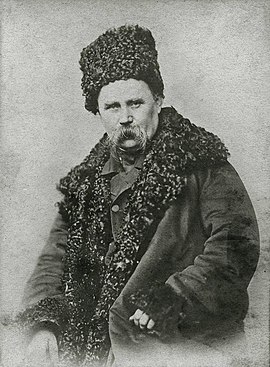
Vasyl Kapnist
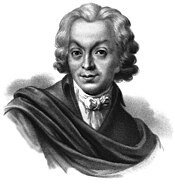
Vasyl Vasyliovych Kapnist is a Ukrainian writer. The alleged author of the treatise “History of the Rus”, which gained significant popularity among patriotic Ukrainians in the 19th century.Marshal of the nobility of the Poltava province in 1820-1822.
He had great authority among the Ukrainian nobility. He held the elected positions of the leader of the nobility of Myrhorod County (1782), Kyiv province (1785–87), general judge of the Poltava province (from 1802) and Poltava leader of the nobility (from 1820). While in office, he always defended the interests of the Ukrainian people.
Vasyl Kapnist began printing in 1780. Wrote odes, elegies, anacreontic poems.
In 1783, he wrote “Ode to Slavery” (published in 1806), in which he spoke out against the strengthening of the colonial policy of the Russian government in Ukraine, in particular, the final liquidation of the Cossack regiments in 1783 and the introduction of serfdom in Slobid and Left Bank Ukraine.
In April 1791, Vasyl Kapnist, together with his brother Peter, was in Berlin on behalf of Ukrainian patriotic circles. He held negotiations with representatives of Prussian government circles, in particular with the Minister of Foreign Affairs (Chancellor) of Prussia E.-F. Herzberg about the possibility of providing assistance to the Ukrainian national liberation movement in the event of an open armed attack against the Russian autocracy.
In 1798, he published the poem “Yabeda”, in which he sharply criticized the Russian colonial policy on Ukrainian lands.
Vasyl Kapnist translated “A word about Igor’s regiment” into Russian and made an interesting comment emphasizing the Ukrainian origin and Ukrainian features of this work.
Panas Mirnyi
Panas Myrnyi (Panas Yakovych Rudchenko) is a Ukrainian novelist and playwright, born on May 13, 1849 in the family of an accountant of the county treasury in the city of Myrhorod. His father came from the family of a simple Cossack who took part in the war with Napoleon in 1812, managed to rise to the rank of ensign, and after returning to Poltava Region, purchased a small estate in the village of Biliki, Myrhorod District. Mother, Tetyana Ivanivna Gordynska, is the daughter of a local collegiate registrar. She derived her lineage from a Western Greek who participated in the Seven Years’ War (1756-1763). According to Myrny himself, this man, “who was nicknamed Grekov, had the rank of staff captain and was awarded land and serfs for his service.”
After several years of study at the Myrhorod parish school, and then at the Hadiatsky district school (1858-1862), the fourteen-year-old boy went to work. Rudchenko’s civil service began in 1863 in the Hadiac District Court. The following year, he moved to the county treasury as an assistant accountant, and later, after a short stay in Pryluky, he held the same position in the Myrhorod Treasury.
His first attempts at literary creativity and folkloristic activity fall on this time. Some of the folklore materials collected by Panas were later published by his brother Ivan Bilyk.
Panas Myrny’s literary interests were closely combined with his social activities. Even in his youth, he was associated with the revolutionary liberation movement.
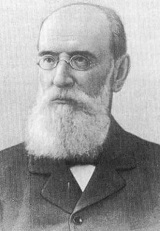
Ivan Bilyk
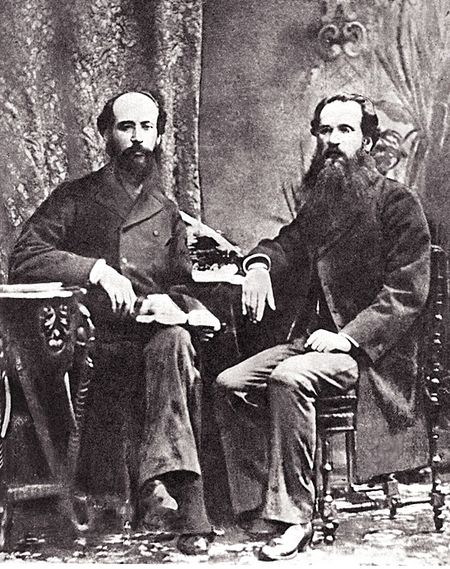
Ivan Bilyk (Ivan Yakovych Rudchenko) is a Ukrainian folklorist, ethnographer, writer, translator, literary critic, older brother and co-author of Panas Myrny.
He studied first in the parish school, then in the district three-class school, which he successfully graduated in 1857. It was not financially possible to enter the gymnasium, and the father took the boy to train him to serve in the treasury (that year, the father was transferred to Hadyach to the position of treasurer). But the service did not satisfy the young man, he rushed to education. This desire strengthened communication with the young company from the Drahomanov family. Reading books, talking about the fate of the people, being interested in Ukrainian folklore – all this contributed to the growth of consciousness and patriotism.
Ivan Yakovych began to record songs, proverbs and sayings, folk customs, and at the same time to write his own works. In 1860, some of his records were published in “Poltava Provincial Information”, and from 1861 – in the journal “Osnova” under the pseudonym Ivan Kyvaigolova. In 1862, he published folk tales recorded in Myrhorod, “About the Cuckoo, the Scavenger and the Viper” (pseudonym – Ivan Ruina). Since 1867, he published poetry, translations and literary and critical articles and reviews in Lviv Pravda.
Great merit of Ivan Bilyk as a literary critic. His aesthetic views developed under the influence of the work of T. G. Shevchenko. In the article “Anxiety over the fresh grave of T. G. Shevchenko” (1886), he called Kobzar one of the greatest folk poets.
In addition, Bilyk is also known as a translator into Ukrainian of the works of A. Mickiewicz, H. Heine, J. Byron and others. He also wrote lyrical poems, however, mostly for himself and close people.



